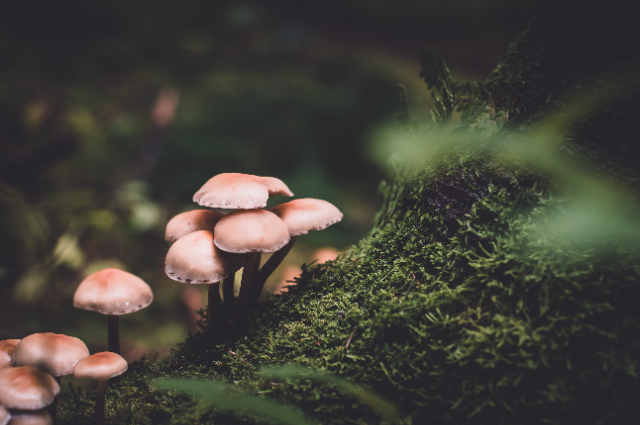
Photo by Presetbase Lightroom Presets on Unsplash
A new species of mushroom, Candolleomyces Albosquamosus, discovered on the campus of the Jawaharlal Nehru Tropical Botanic Garden and Research Institute (JNTBGRI) in Kerala, is a significant addition to the biodiversity of the region.
This area has highlighted the importance of Western Ghats as a biodiversity region and the chance to explore more about its fungal diversity which will help us to gain better knowledge about its flora and fauna.
More About the New Mushroom Species:
- The new species belongs to the genus Candolleomyces, which is relatively a small genus with only 35 recognised species worldwide.
- Researchers C.K. Pradeep and P.K. Nayana from JNTBGRI's Microbiology Division published the discovery in the scientific journal Phytotaxa.
- The new species is characterized by a delicate appearance and has a honey-yellow cap. The mushroom features a bell-shaped cap covered in white, woolly scale-like structures. Mature specimens have a cap diameter ranging from 12mm to 38.5mm and a height of approximately 58mm.
- Specimens of this mushroom were collected from dead logs and bamboo culms.
Significance:
New species are essential for decomposing plant litter in tropical forests contributing to nutrient cycling in the ecosystem. The significance of saprophytic fungi is underlined in forest ecosystems.
The Western Ghats is already a rich biodiversity hotspot and is home to many species being endemic to the area. Western Ghats runs parallel to the Western Coast of India covering a length of over 1,600 kilometres. They have been designated as UNESCO's World Heritage Site. They have an important role in regulating India's monsoon causes orographic rainfall. It supports tourism as an industry too. They are indeed our natural treasures.
. . .
Reference:
- oliveboard.in
